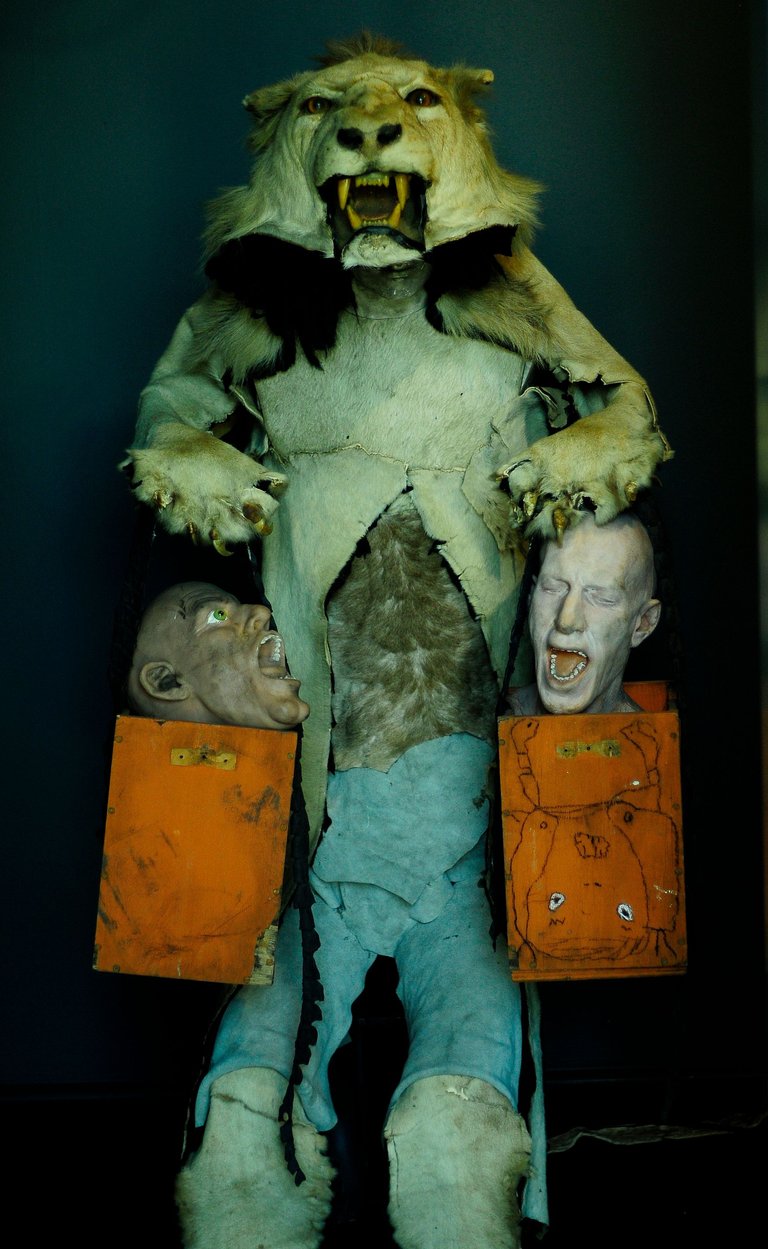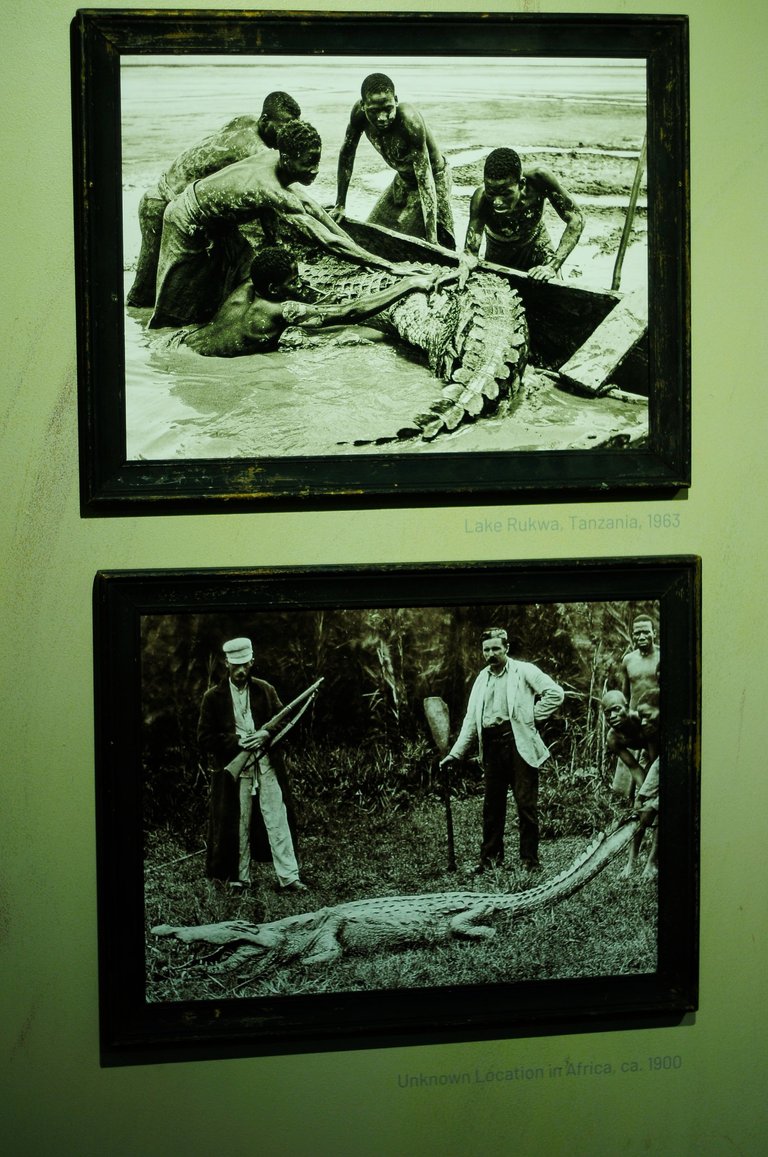Recently, we had the opportunity to travel a bit out of town, so we stopped by the Inside Out Center for Arts, a Roger Ballen art gallery, in Johannesburg, South Africa. In a previous photography post, I shared some of the photographs that I took inside the art centre. This is not your average everyday artist, creating "beautiful" art. No, this is a rare artist, challenging your preconceptions of what art is, but also everyday objects in life.
Through his gallery, artworks, and his own talking, his art comes to life, speaks to you in a strange language, and touches your soul. Roger Ballen is a strange man, but when you walk in his presence, you feel awe-inspired, you begin to see life through his eyes. And is that not what art really is? Always the perspective of the artist's life?
In any case, I want to take you with me on this virtual journey to the Roger Ballen, Inside Out Centre for Art in Johannesburg, South Africa. This was a once-in-a-lifetime experience we had to walk alongside the artist, while he talked to us as if we were just friends. I really hope that this will also be an interesting journey for you.
Without further ado...
(NOTE/WARNING: This post contains images that might be upsetting to some people. This is "art" and it challenges us to think. This is also part of an art exhibition illustrating old photographs of actual events of animal cruelty in the form of hunting. If this is upsetting to you, please proceed with caution.)
You Are Greeted With the Uncanny
As you walk through the front door/entrance, you are greeted with strange figures that are so Ballenesque (the uncanny style of Roger Ballen). If you can stomach this entrance, you will be fine in the gallery. Preferably in daylight though. At night, this gallery will not see most people as the figures will create nightmares in the best of us.
(I remember taking my parents to an art gallery in Cape Town, South Africa in 2015. One whole floor of the gallery was given Roger Ballen and he created one of the most strange and uncanny installation art pieces. My mother did not like it at all and left very soon after entering. Roger Ballen is not for everyone.)
 |  |  |
|---|
We were greeted by Roger Ballen himself and his daughter, Amanda. They reassured us that all of the animals were fed, that they were not hungry, and that we were safe. I am sure this is a joke that never gets old. My girlfriend and I were the first there, so we had the unique opportunity to talk to Roger Ballen for a while. His demeanour does not match with the art. Or maybe it does. His demeanour is quiet, shy, humble, and pleasant. But in retrospect, this might be uncanny, especially while you know what type of art he makes.
As soon as more people joined our group, Roger Ballen sporadically came and went. Almost like he was nervous about his own walkabout. Or maybe he was anxious about his own art coming to life...
The whole gallery is full of his artworks, or "puppets"/creations. When you wander through the place and forget for a moment about these creations, you scare yourself awake thinking that there is someone with you. It is really a strange place to be, even in daylight. I would not manage to be in the building after dark...
The Strange "Puppets" of Ballen
The puppets or creations are at once very lifelike, but also not. They play on your imagination, on your sense of reality. These figures are real, but also not. Some of them are taxidermied and have this uncanny feeling of being real. The puppets, the human ones at least, we know (or hope) are not real. But they give the atrocities that humanity commits a life-like presence in the room.
For the installation art pieces in the gallery at the moment depict the slaughtering of animals in the colonial era in Africa.
Few people think about the loss of animal life during the colonial period, as most people think about the loss of human life and the loss of so many cultures. However, one should also remember, as this installation piece reminds us, the loss of animal life. Big game was hunted to the brink of extinction, all for the "fun" of it. These colonial hunters came to Africa to show their "masculinity" by hunting animals, by shooting them from a very close range, and bringing them back with them as trophies. With the dawn of photography, the main focus of the current art installation piece, these "men" also took photographs of their debauchery.
And this is the main theme of most of the art puppets/creations. Death, animals, humans, suffering; these are all of the things that these pieces scream. We are the creators of our own suffering, as much as we are the creators of suffering for other animals as well.
Photographic Evidence at the Dawn of the Century
With photographs being relatively new, hunters could get two trophies with them: the actual taxidermied animal and a photograph of the event. The animal is always displayed at its most vulnerable and sad position, its demise (or murder?). There is usually an indigenous person in the frame, one that probably helped kill this animal for the benefit of their own family (help kill or be killed? - it was colonialism...), and then the "proud" hunter standing tall over the slain animal and the conquered (colonised) people. These images conjure up feelings of hatred toward mankind (the colonial mankind). The sad part is that hunting is still a massive industry today. Few people who hunt have actually changed their view regarding this sport. We still hunt these animals, despite realising that it is morally reprehensible to do so.
We were also shown a film, consisting of various clips of early videos showing the hunting and how these photographs were taken. Almost everyone in the room left disgusted, and close to tears.
NOTE/Warning: If dead animals are not for you, please skip over these photographs. They are part of the installation art piece.
The Building as Art
The art centre's name is "Inside Out". The design of the building illustrates this. The inside of the building looks the same as the outside. Concrete, usually illustrating the outside of a building, is also on the inside. Or the outside is also inside, and the inside is also outside.
This obviously illustrates the psychological aspect of Ballen's work as well. He tries to show the inside of our minds on paper. But he also shows us the outside (outsider), the outcasts, those on the periphery. This brings the outside to the inner sanctuary of the centre.
This allows us, the viewers, to take part in the strange, the uncanny, the places we would not visit.
Ballen himself said he does not take photographs outside any longer, as he is older now and where he photographs is not safe any longer (or it was never). So now he brings these strange places inside, inside the centre. There is small dwellings inside of the centre, where the viewer can walk beside Ballen as if they were outside, but now they are inside.
He brings the outside, the dwelling, the home of so many of his subjects, inside, where we can also walk, as if we have become one with Ballen...
Listening as a Form of Art
It is different to listen to an artist than to read his words, or to read words about his/her art. By standing next to someone, listening to them, thinking along with them, and seeing their body language as they reflect on their own work, is something special. It is different to the standard way of reflecting on art. It takes you out of your normal world and places you inside of the artist's world.
 |  |
|---|
Listening then becomes part of the artwork, part of the experience. It is a strange moment in which you become part of the art, we as the viewer become part of the installation. We are mere puppets, creations, listening to our maker, the artist who sculpted us with his words.
The uncanny is strange, perplexing, and discomforting. Walking alongside Roger Ballen takes you on this strange and uncanny journey. The artist does not seem to be phased by his own work, as he intimately knows every aspect thereof.
As you can hear, the voice of this man, this artist, turns you into an artwork, something to be marvelled at. He talks, and you listen, as the whole experience becomes a piece of art.
Postscriptum, or A Walkabout in the Valley of Art
Walking in an art gallery is totally different to walking in nature, in the mountains. Or is it really? Both entail walking. Both entail regarding something external to yourself as worth pondering about, worth mesmerizing at close, worth looking at... Granted, the mountain is magnitudes bigger and in the grander schemes of things much more impressive and longer lasting. But the artwork is also something akin to a miracle. It will not outlast us, it does not inspire in us the sublime, it is nothing comparable. But still, we spend time with it, immersed in its presence. If we could, we would swim in it like the river. Art is obviously different to the hike in the mountain, but there is so much similarity as well.
We left the gallery with a strange feeling. At once, we were inspired by art, by something bigger than us, by the strangeness of the uncanny. But on the other hand, we also felt disgusted, especially at humanity itself. We felt different, and that is the power of art. It changes you, it makes you see the world different, from different angles, perspectives, and viewpoints.
I hope that you enjoyed this rather strange virtual journey with me through the Inside Out Centre for Arts. It was something to experience, and the reason why I want to share it with you.
Safe travels, and be well.
All of the photographs and videos are my own, taken with either my Nikon D300 or iPhone. I received permission from the artist himself that I could photograph him and his art. The musings are also my own, albeit inspired by the uncanny, the strange, and the weird.
















Congratulations, your post has been added to Pinmapple! 🎉🥳🍍
Did you know you have your own profile map?
And every post has their own map too!
Want to have your post on the map too?